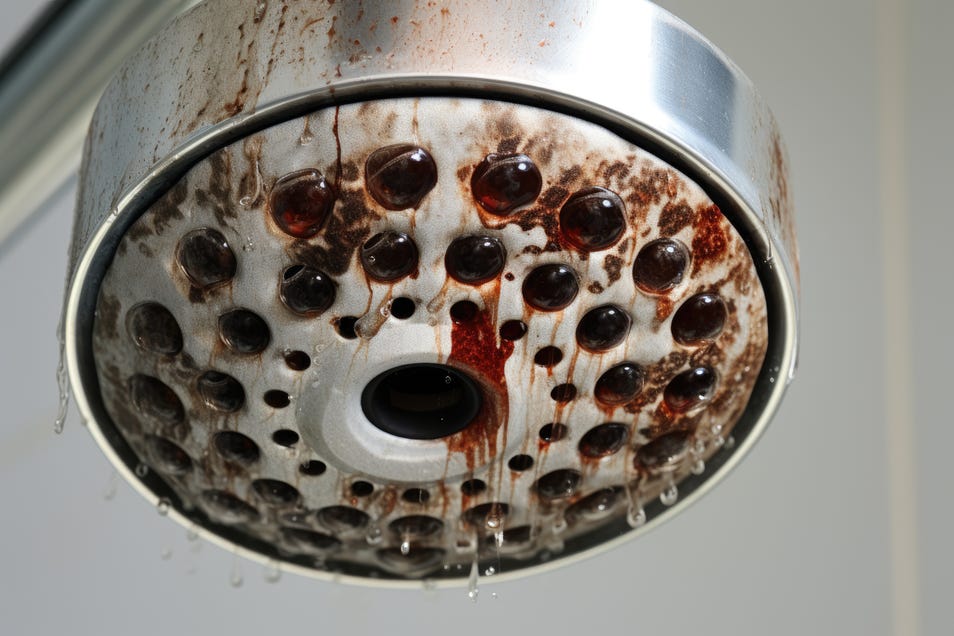Easy Limescale Removal Tips

Surfaces that come into contact with hard water are prone to limescale buildup. With time this deposition becomes hard and engraves on surfaces such as toilet, sink, taps, shower doors, and other fixtures.
Removing limescale requires a physical effort that might be exhausting for you but no need to worry; we will provide you with some very effective yet easy ways to get rid of it.
What is limescale?
If you want to remove limescale, you will first need to understand what limescale is and how it looks.
Limescale is the deposition of calcium and magnesium content in increased quantities in hard water. It is a white or green hard, coarse deposition found on surfaces that come in contact repeatedly with hard water.
If you are facing such an issue, here are some beneficial tips on removing limescale from your bathroom, especially toilet, sink, glass doors, taps, and other fixtures.
Common causes of limescale
It is vital to know the cause of any problem before solving it. Therefore, the agents that are responsible for the accumulation of limescale are as follows:
Hard water
For many reasons, hard water is mainly responsible for limescale buildup. Hard water is rich in magnesium and calcium. When this water evaporates, it leaves chalky-white residue on bathroom surfaces.
If you do not clean these surfaces regularly, calcium deposits might become engraved on these surfaces. These deposits can also accumulate on surfaces like water pipes, causing a blockage of water flow.
Moreover, if you leave these stains unattended, it becomes difficult to get rid of them.
Installing a water softener is one of the ways to prevent limescale deposition.
Environmental conditions
Limescale builds up frequently in humid environmental conditions, as the surfaces are not dry enough. The dampness provides a breeding ground for the germs and bacteria and a favorable environment for limescale accumulation.
Splash from taps or rainwater
People who use hard water, industrially or commercially, can face the limescale problem. You might be surprised to find out that rainwater that falls on the porous ground eventually becomes hard. As rainwater penetrates a porous ground, it absorbs calcium carbonate and magnesium and becomes rich in these minerals.
That is why you might have noticed the walls and ceilings becoming chalky-white in appearance after rainfall.
Lack of regular cleaning
A sparkly, neat, and clean bathroom is the key to keeping it hygienic. Suppose you do not clean your bathroom and other surfaces regularly. You will provide a seedbed for the germs to grow.
Regularly and effectively clean the surfaces in your bathroom. Consistent cleaning demands minimal effort but provides long-term maintenance.
Easy limescale removal tips
These easy and super fast cleaning tips will help you get rid of limescale in no time with minimum physical effort.
1. Use Harpic Powerplus Original
If you suffer from a limescale problem then, Harpic Powerplus Original is your best bet at easing all your sufferings. It will remove 100% of limescale, rust, toughest stain and 99.9% of bacteria and germ.
2. Vinegar and water spray
An easy and quick cleaning fix is mixing water and vinegar in equal proportions and spraying it on the affected surface. Leave it for a short period of time and wipe it off with a microfibre cloth.
3. Quick tips
Do not clean the surfaces exposed directly to the bright sunlight, as it will evaporate the solution before it acts.
Do not forget to rinse some of the surfaces, such as, the window glass with water as there are dust particles on the surface.
Do not use abrasive tools for cleaning.
Prevention tips to avoid limescale buildup
After you have cleaned the surfaces, put some effort into preventing the buildup of limescale to make your life easier in the future.
1. Maintain proper ventilation
Keep your house well-ventilated to avoid humidity. Install an air vent, an exhaust fan, and an automatic humidity sensor. Keep your windows open for a certain period to allow proper ventilation.
2. Water Treatment
It is a not-so-budget-friendly idea; having said that, if you live in a hard water area and can afford to install a water softener, you should do so.
Installing this device will reduce the amount of calcium and magnesium in the water and will not allow limescale buildup too quickly.
3. Addressing plumbing issues
You should contact a professional plumber if you are facing any plumbing issues, such as; leakage or blockage. Delaying the problem will only be troublesome for you and can cost you more in the future.
The buildup of limescale is not a big issue if you put in some effort and try cleaning it using Harpic Powerplus Original. A household solution might also work such as mixing vinegar, baking soda, and water.
FAQs
1.What is the best remover for stains and calcium deposits?
Without any doubt, Harpic Powerplus Original is the best stain and calcium deposit remover.
2. How do you keep calcium buildup off?
Apply Harpic Harpic Powerplus Original on the affected surface. Let it rest for a few minutes, and gently wipe it off using a microfibre cloth. You can also use a mixture of vinegar and water in equal proportion and repeat the process.
.png?width=70&height=88&format=png&quality=50)